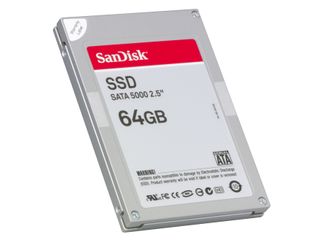Has flash memory had its chips?
Price declines and magneto electric tech hammers memory market

Memory chip makers aren't having a good year. Struggling SanDisk is about to be snapped up by Samsung at bargain basement prices and rivals Qimonda and Micro also look to be on their last legs.
A new Gartner report, out today, estimates that spending on memory chips is set to decline by a further 25 per cent this year as the global economic crisis deepens, and sink another 12 per cent in 2009.
The analysts say that an oversupply of DRAM (dynamic RAM) and NAND flash memory is largely to blame for the downturn in prices.
8GB of NAND memory that cost $3.50 this time last year is now selling for around $1.50 - although consumers don't see anything like these prices, of course.
Thanks for the memory
The final straw could be the announcement today by Singapore A*STAR's Data Storage Institute that it has developed a new type of phase change material (PCM) memory that promises faster, simpler chips in the future.
Phase change materials are substances that are capable of changing their structure between amorphous and crystalline at high speed, and are currently the most viable alternative to replace Flash memory.
Get daily insight, inspiration and deals in your inbox
Get the hottest deals available in your inbox plus news, reviews, opinion, analysis and more from the TechRadar team.
Conventional PCM memory works by changing the structure with an electric current. The new materials use magnetic fields instead, raising the possibility of multifunctional devices that could combine memory, sensors and processing on a single chip.
Mark Harris is Senior Research Director at Gartner.
Most Popular


